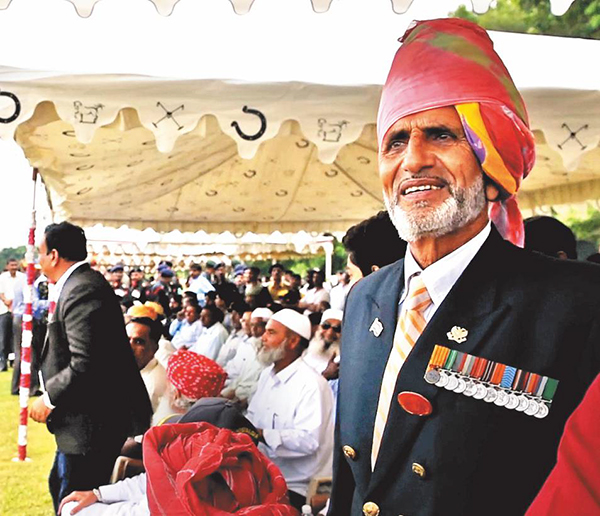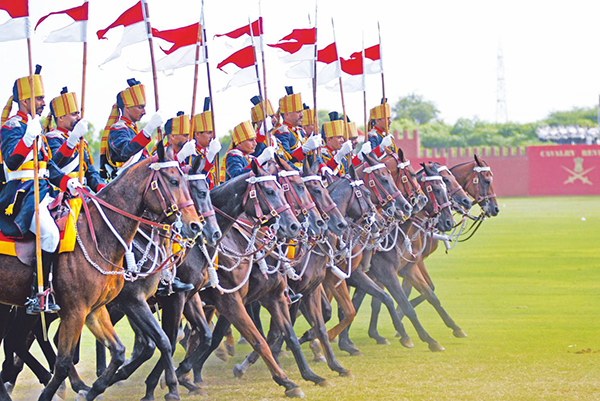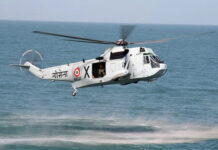61st Cavalry, one of the world’s last remaining horse-mounted cavalry regiments is set to say goodbye to its horses, with the government approving a proposal to equip the 61st Cavalry with tanks.
The Jaipur-based cavalry regiment is being converted into a regular armoured regiment on the basis of a recommendation made by the Lt Gen DB Shekatkar Committee in a report on sharpening the army’s combat edge and trimming its revenue expenditure.
Three independent squadrons of which are extensions of Central India Horse, 7th Light Cavalry and 63 Cavalry, are being amalgamated under the headquarters of the 61st Cavalry to form the new tank unit.
Two horse squadrons of 61 Cavalry in Delhi will continue to be looked after by Commandant of 61 Cavalry, especially their equestrian training.
The regiment’s 300-odd horses (200 in Jaipur and around 100 with a squadron of 61st Cavalry in Delhi) will become part of a new equestrian node, he said.
61 Cavalry, steeped in tradition and sporting history, has not taken part in any operation during the past 25 years. Its main occupation was to breed and maintain horses for ceremonial purposes and equestrian sports. In the field of sports, however, the regiment accounts for one Padma Shri, 10 Arjuna Awards, 11 Asian Games medals and a raft of representations at the Polo World Cup and international equestrian competitions. It has been a part of the annual Republic Day parade for several decades.
The President’s Bodyguard, also a horse-mounted unit, has a well-defined role to perform ceremonial duties for the country’s President.
Rich History
The conversion of Indian cavalry regiments to armoured regiments began on 14 April 1938, with The Scinde Horse parading its horses for the last time. 82 years later the last horse cavalry regiment is converting to T-72 tanks.
A number of other horsed cavalry regiments which were remnants of the States Forces maintained by the erstwhile princely rulers were amalgamated to form 61 Cavalry in 1953. These were the Gwalior Lancers, Jodhpur/Kachhawa Horse, Mysore Lancers and ‘B’ Squadron, 2nd Patiala Lancers.
The Mysore Lancers and Jodhpur Lancers had fought together as part of the 15th Imperial Service Cavalry Brigade in Egypt, Sinai and Palestine during the First World War.
On 23rd September 1918 the two regiments joined forces through a brilliant manoeuvre to capture the strategic port of Haifa after a great charge on Turkish positions in the face of withering artillery and machine-gun fire. This was a rare instance of cavalry taking a fortified town at the gallop.
The striking Teen Murti Memorial in New Delhi, incidentally, was constructed during the British Raj to commemorate the heroic role played by the Hyderabad, Jodhpur and Mysore Lancers during the legendary Battle of Haifa.

The Poona Horse was selected to remain horsed while the rest of the cavalry was mechanised. Just after the start of World War II, the Poona Horse was also mechanised. In 1942, the regiment was ordered to the middle east to join the British Eighth Army. In the closing stages of the First Battle of El Alamein, the Poona Horse was the guard force for General Claude Auchinleck, the commander of the 8th Army at the tactical headquarters. Thereafter, they were ordered back to Iraq as part of the British Tenth Army. In September 1944 the Regiment was sent to Cyprus on garrison duties and were still there in May 1945 when Germany surrendered. The Regiment returned to India in October 1945 and were issued their first tanks, the Stuart MK IV. Later it was equipped with upgunned Sherman tanks and Centurion tanks.
Criticism
Those who have been critical of the conversion say that it is a short-sighted step that will destroy a glorious historical tradition. The purists contend this will “demolish the special character and historical legacy” of the 61 Cavalry.
Many senior cavalry veterans feel that 61 Cavalry was much more than just a regiment. It was a symbol of cavalry traditions, heritage, culture, and legacy and, therefore, needed to continue as such.
Comments
The 12-lakh strong Army currently has around 1,100 Russian-origin T-90S main-battle tanks as well as 124 indigenous ‘Arjun’ and 2,400 older T-72 tanks in its over 65 armoured regiments. Each armoured regiment typically has three squadrons of 14 tanks each under it.
With additional T-90S and Arjun tanks in the pipeline, the Army wants to raise new armoured regiments.


















